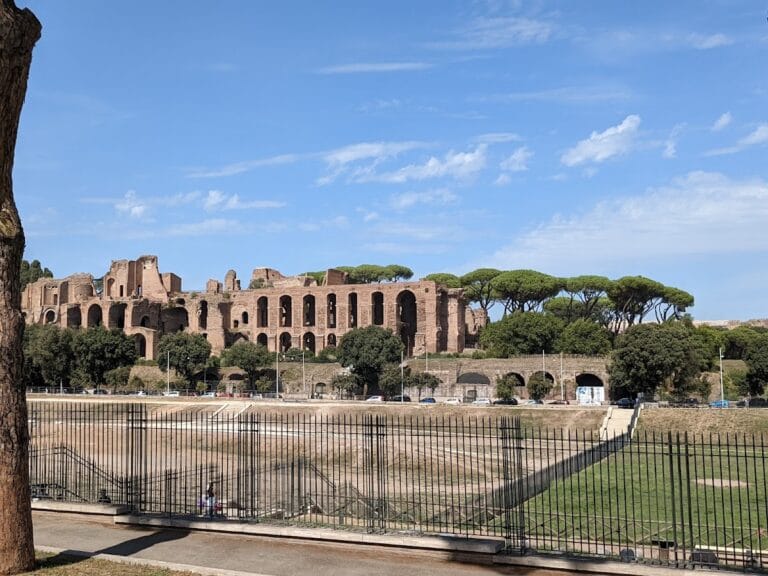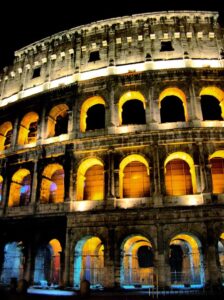The Colosseum: The Basics You Need to Know
Table of Contents
History of Rome’s Iconic Amphitheater
The Colosseum is an elliptical amphitheatre located in the center of Rome, Italy. It is situated just east of the Roman Forum. This structure is recognized as the largest ancient amphitheatre ever built and remains the largest standing amphitheatre in the world. Construction of the Colosseum began under Emperor Vespasian in 72 AD and was completed in 80 AD under his successor, Titus. Modifications were made during the reign of Domitian, completing the structure associated with the Flavian dynasty.
The Colosseum is constructed from travertine limestone, tuff, and brick-faced concrete. It has an estimated capacity of 50,000 to 80,000 spectators, with an average attendance of around 65,000. The amphitheatre hosted various events, including gladiatorial contests, animal hunts, executions, and re-enactments of famous battles. Its use for entertainment ceased in the early medieval era, after which it was repurposed for various functions.
Despite suffering significant damage from earthquakes and stone robbers, the Colosseum remains a symbol of Imperial Rome. It has been recognized as one of the New 7 Wonders of the World and is a major tourist attraction. The Pope leads a torchlit procession known as the “Way of the Cross” at the Colosseum each Good Friday, linking it to the Catholic Church.
Name and Etymology
The original Latin name for the Colosseum was simply “amphitheatrum,” meaning amphitheatre. The modern name, Flavian Amphitheatre, refers to the Flavian dynasty, which oversaw its construction. However, there is no evidence that this name was used in classical antiquity. The term “Colosseum” is believed to derive from a colossal statue of Nero, known as the Colossus of Nero, which was located nearby. The name evolved over centuries, with various forms appearing in Medieval Latin and other languages.
By the year 1000, the term “Colosseum” was established in reference to the amphitheatre. An epigram attributed to the Venerable Bede in the 8th century linked the statue to the fate of Rome, although this was often misattributed to the amphitheatre itself.
Construction and Renovations
The site for the Colosseum was chosen in a low valley between the Caelian, Esquiline, and Palatine Hills. This area had been densely populated by the 2nd century BC. Following the Great Fire of Rome in 64 AD, Emperor Nero seized the land to build his grand Domus Aurea. Vespasian’s decision to construct the Colosseum on this site was a populist gesture, returning the area to the public.
Construction was funded by spoils taken from the Jewish Temple after the First Jewish-Roman War. A large workforce, including slaves and skilled laborers, was employed to build the amphitheatre. The Colosseum was completed up to the third story by Vespasian’s death in 79 AD, with the inaugural games held in 80 AD. These games reportedly involved the deaths of over 9,000 wild animals.
Medieval Transformations
In the late 6th century, a small chapel was built within the Colosseum, marking a shift in its use. The arena was converted into a cemetery, and the vaulted spaces were repurposed for housing and workshops. By the 14th century, the Colosseum was largely abandoned and became a hideout for bandits. A major earthquake in 1349 caused significant damage, leading to the reuse of its stones in other constructions.
Restoration efforts began in 1377, and the Colosseum was inhabited by a religious order until the early 19th century. The structure was stripped of much of its stone, which was repurposed for other buildings. The iron clamps that held the stonework together were also removed, leaving visible scars on the structure.
Modern History and Restoration
In the 16th and 17th centuries, various proposals were made to repurpose the Colosseum, including turning it into a wool factory. Pope Benedict XIV later declared it a sacred site, associating it with early Christian martyrs. Restoration projects were initiated in the 19th and 20th centuries, focusing on stabilizing the structure and removing vegetation that threatened its integrity.
In recent years, the Colosseum has become a symbol against capital punishment. Local authorities change its nighttime illumination to gold in response to significant events related to the death penalty. The Colosseum is now a popular tourist destination, attracting millions of visitors each year.
Physical Description
The Colosseum is a free-standing structure, unlike many Roman theatres built into hillsides. It measures 189 meters long and 156 meters wide, with a height of 48 meters. The outer wall was constructed using over 100,000 cubic meters of travertine stone, held together by iron clamps. The amphitheatre features three superposed storeys, each adorned with columns of different architectural orders.
The arena itself is an ellipse measuring 83 by 48 meters, covered by sand. Beneath the arena lies the hypogeum, a complex network of tunnels and cages for gladiators and animals. This underground structure was added later and included mechanisms for raising and lowering scenery and animals into the arena.
Seating
The seating arrangement in the Colosseum reflected the social hierarchy of Roman society. Special boxes were designated for the Emperor and Vestal Virgins, while senators occupied a podium. The non-senatorial noble class and ordinary citizens were seated in tiers above. Specific areas were reserved for various social groups, including soldiers and priests.
Each tier was divided into sections and numbered for easy access. The uppermost level was reserved for the poorest citizens, while certain groups, such as gravediggers and former gladiators, were banned from entry. This stratified seating arrangement underscored the social divisions of ancient Rome.
Events
The Colosseum hosted a variety of events, including gladiatorial shows and animal hunts. These spectacles were often funded by private individuals and had strong religious connotations. The arena also featured executions and performances by acrobats and magicians. The scale of these events could be immense, with thousands of animals and gladiators participating.
In its early days, the Colosseum was also used for naumachiae, or simulated sea battles. Accounts describe the arena being flooded for these events, although the practicality of such displays is debated among historians. The arena was also used for recreations of natural scenes, showcasing elaborate sets and real animals.
Modern Use and Preservation
Today, the Colosseum is a major tourist attraction, with a network of subterranean passageways opened to the public in 2010. It also serves as a site for Roman Catholic ceremonies, including the Stations of the Cross led by the Pope. Restoration efforts continue to preserve the structure for future generations.
In 2011, a significant restoration project was initiated, funded by a private partnership. This project aimed to clean and restore the Colosseum’s façade and interior, enhancing its appeal as a cultural site. The top levels of the amphitheatre have been opened for guided visits.
Significance in Christianity
The Colosseum is often associated with the martyrdom of early Christians, although some scholars argue that most executions occurred elsewhere in Rome. The structure was not initially regarded as a sacred site, and its stones were repurposed for other buildings. However, over time, it gained a Christian connection, with popes declaring it a sanctuary and forbidding its use as a quarry.
Various popes have funded restoration efforts, and the Colosseum remains a site of Christian significance today. A cross stands within the amphitheatre, symbolizing its transformation from a site of entertainment to one of reflection on martyrdom and faith.
In Popular Culture
The Colosseum has been featured in numerous films, artworks, and games. It has appeared in movies such as “Gladiator” and “Roman Holiday.” Architectural designs inspired by the Colosseum can be found in various locations, including the Los Angeles Memorial Coliseum and the Palazzo della Civiltà Italiana.
Nearby sites
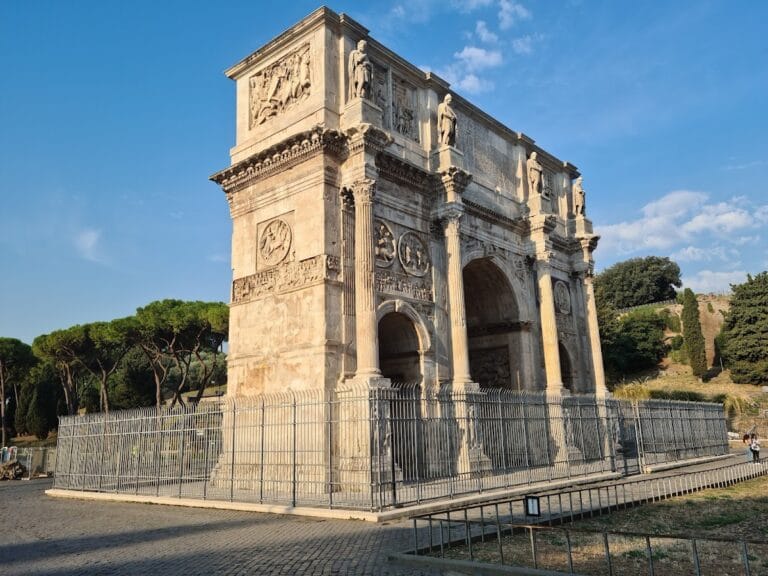
Arch of Constantine: Rome’s Triumphal Monument Celebrating Emperor Constantine I
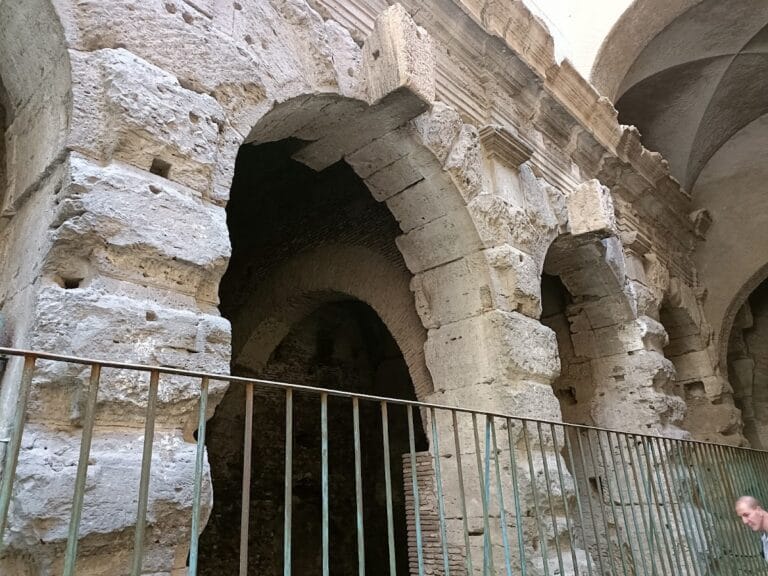
Temple of Divus Claudius, Rome: A Monument to an Imperial Deity
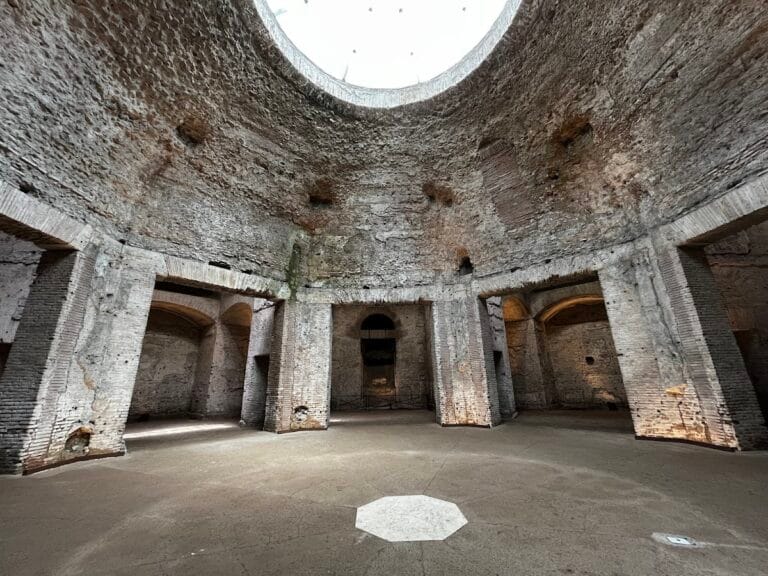
Domus Aurea: Nero’s Imperial Villa in Ancient Rome
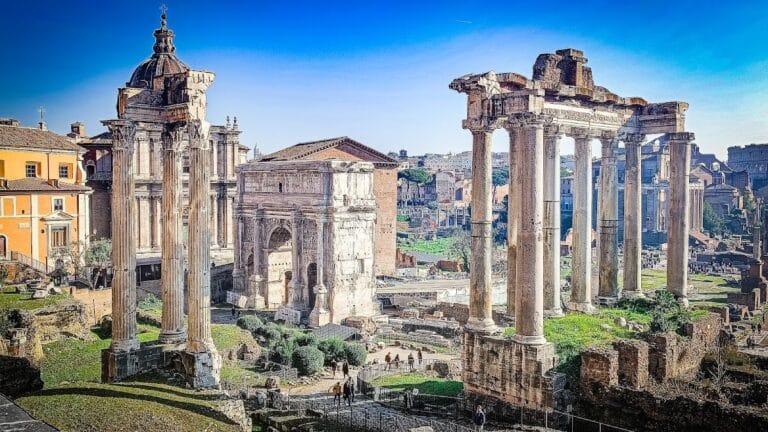
Roman Forum: The Heart of Ancient Rome’s Civic Life
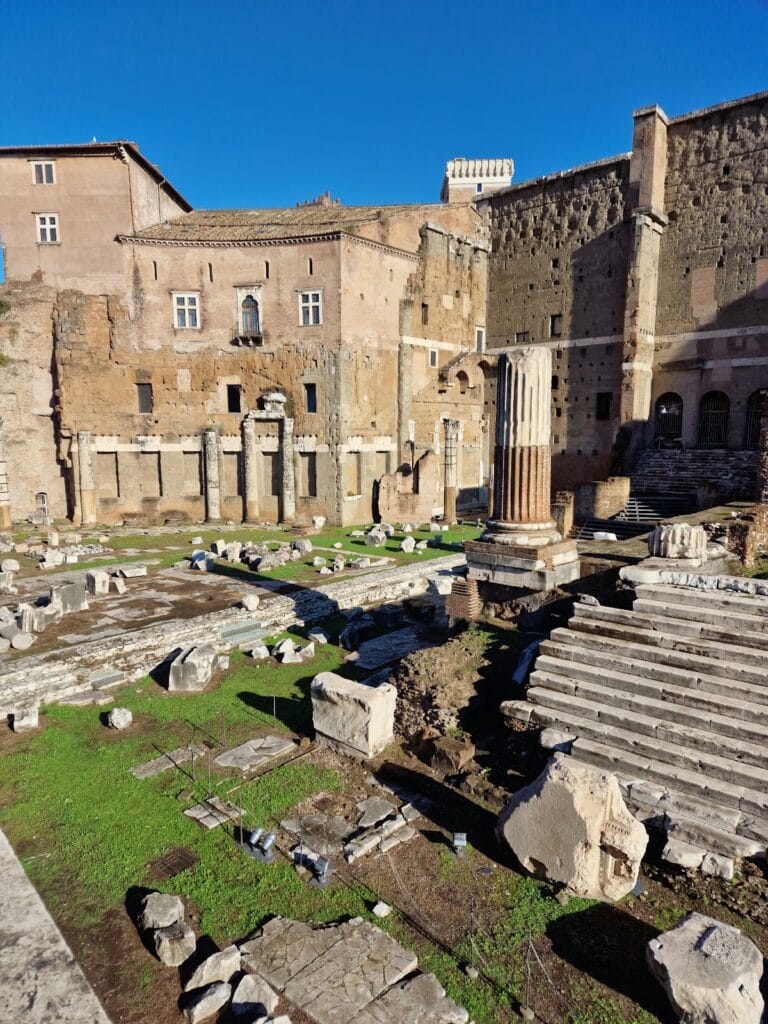
Forum of Augustus in Rome, Italy
